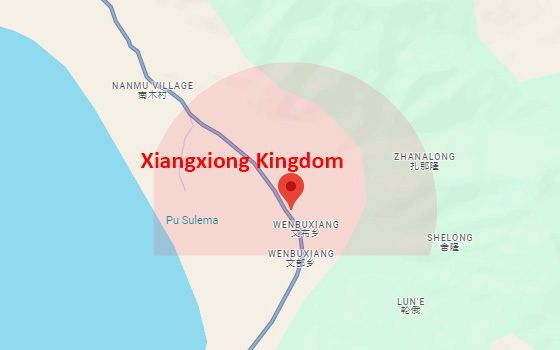
Tibet Tours for All around the Globle are Available Right Now!
It is the best time to join our Tibet small group tour in 2024 at the best local price.
 |
86-28-81754631
|

According to the legend, the relics of the Xiangxiong Kingdom in western Tibet were the earliest civilization center on the Tibetan plateau. Xiangxiong means "land of the roc (a mythical huge bird)" in Tibetan. According to historical records, before the rise of the Tubo Kingdom (629-846), the Xiangxiong Kingdom existed and flourished in western Tibet, living mainly on animal husbandry, with some agriculture. The kingdom even established ties with the Tang Dynasty in China's Central Plains.
Tibetan historical records show that the Xiangxiong Kingdom flourished in the 7th century, and contained a highly developed culture that included the unique Xiangxiong written language. It was also the cradle of Bon, the indigenous Tibetan religion. The Xiangquan (Elephant Spring River) and Shiquan (Lion Spring River) valleys were its central regions. Xiangxiong culture, consisting of religion, characters, and medical science, occupies an important position in Tibet's civilization history.
At the height of its power and splendor, the kingdom boasted extreme military power and occupied most of the Tibetan plateau, parts of today's Qinghai and Sichuan provinces, in Northwest and Southwest China respectively, and even the Ladak Kingdom (reputedly today's Kashmir).
Later, Tubo tribes grew increasingly stronger and conquered Xiangxiong in the 8th century. Hence, Xiangxiong together with its culture disappeared almost overnight, leaving no traces of its glorious past and highly developed civilization. Even today, historians are unable to identify the cultural legacies and ruins of the Xiangxiong civilization. The sudden disappearance of the Xiangxiong Kingdom still remains a mystery.
A legend says there are two ruins of the Xiangxiong Kingdom of the Bon. One set of ruins is the site of Xiangxiong's ancient capital, located in the Qionglong Silver City in Zhada County, Ngari Prefecture. At the Zhada Clay Forest, there are many relics of early human caves and paintings on rocks. The famous Qionglong City was found in a basin surrounded by mountains. The ruins stand on a cliff, facing east and dotted with caves. The ruined walls and stones lend a mysterious atmosphere.
Another set of ruins is at Qongzon, near the Ombu Office in Nagqu, where many relics of the Xiangxiong Kingdom have been found, including a temple near the most sacred lake of the Bon followers. The ruins consist of many caves dug into the Daguo Mountains, covering one square kilometer. Old trees and caves on surrounding cliffs are the most striking features.
Tips of Xiangxiong Kingdom
After seeing this, you can actually visualize the history and feel the time passing.
0 Comment ON "Relics of Xiangxiong Kingdom"
Check All Tibet Travel FAQs Here